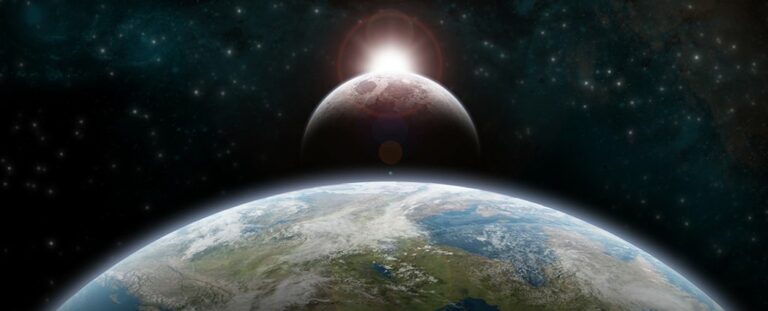A Whopping 12,000 Fresh Solutions Emerged for the Notorious Three-Body Problem
In 1687, Isaac Newton revolutionized our understanding of celestial motion by formulating his laws of motion and universal gravity. This groundbreaking work not only shed light on the movement of distant stars, moons, and planets, but also sparked a centuries-long quest to find mathematical solutions for the complex dynamics of triple systems like the Sun, Moon, and Earth.
Since Newton’s time, astronomers and mathematicians, including Ivan Hristov and his team from Sofia University in Bulgaria, have tirelessly sought to unravel the mysteries of three celestial bodies locked in a stable dance governed by the forces of gravity. Despite the advancements in technology, such as supercomputers and neural networks, finding a comprehensive solution to the three-body problem remains elusive.The three-body problem refers to the challenge of accurately predicting the motions of three gravitationally intertwined objects. A successful solution would enable astronomers to forecast the movements of these objects based on their initial positions and velocities. However, the introduction of a third object into a two-body system significantly complicates the calculations.

Recently, Hristov and his colleagues made an intriguing discovery. They identified a staggering 12,409 orbital patterns for three-body systems with equal masses that adhere to Newton’s laws. While these findings have yet to undergo peer review, they are expected to spark meaningful discussions within the scientific community.Despite this progress, a universal solution to the three-body problem remains elusive. Most systems exhibit chaotic movements that defy precise prediction. Nonetheless, the tireless efforts of researchers like Hristov continue to push the boundaries of our understanding, bringing us closer to unraveling the complexities of celestial motion.
However, similar to this recent study, numerous solutions have been discovered for specific scenarios where the system operates under particular conditions. Nonetheless, some of these solutions hold more significance in practical astronomy compared to others.
This recent collection of solutions pertains to systems where the three celestial bodies are initially stationary before being influenced by each other’s gravitational forces. While these solutions may satisfy the curiosity of mathematicians, they likely have limited real-world applications.
Physicist Juhan Frank from Louisiana State University stated to journalist Matthew Sparkes for New Scientist, “Most, if not all, of these solutions require such precise initial conditions that they are unlikely to occur naturally.”
Nevertheless, Hristov and his colleagues utilized a supercomputer to expand upon previous research published in 2019, which identified over 300 new families of periodic orbits for the three-body problem in free-fall. Specifically, they aimed to address the mathematical disagreements raised in the previous work, which suggested that objects in free-fall systems do not follow closed, looping orbits but rather traverse open-ended trajectories. Notably, Hristov and his colleagues’ work differs by considering three objects of equal mass, rather than random masses.
Hristov and his colleagues suggest that free-fall orbits could potentially have significant astronomical implications. However, the extent of their relevance depends on the stability of these new solutions when considering the influence of distant celestial bodies or solar winds.
According to Frank, three-body systems tend to collapse, resulting in two objects merging into a binary system and expelling the third mass.
At present, Hristov is simply appreciating the beauty of the projected orbits, regardless of their stability. He expressed that whether they are stable or unstable, these orbits hold immense theoretical interest due to their exquisite spatial and temporal structure.
This article is republished from sciencealert under a Creative Commons license. Read the original article.
Do not forget to share your opinion with us to provide you with the best posts !




0 Comments